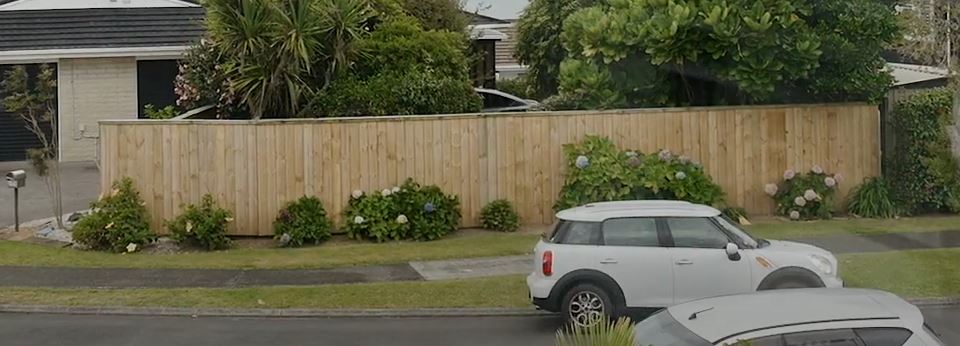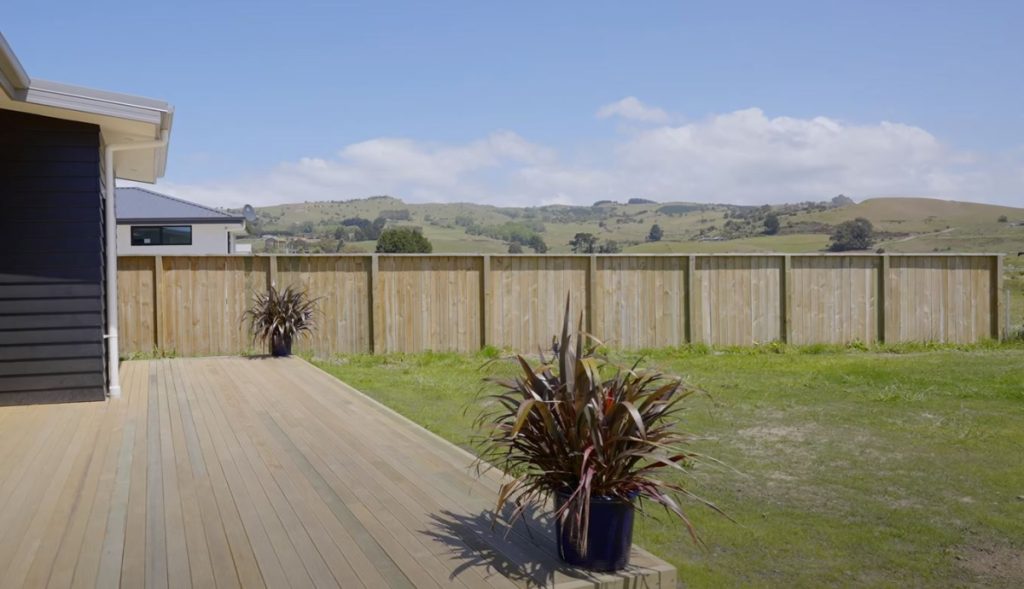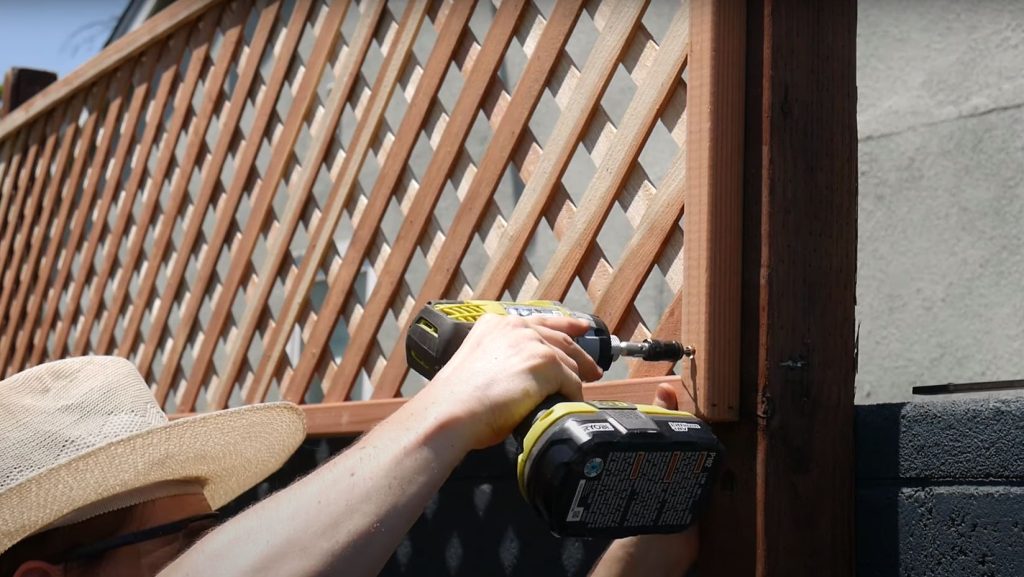Creating a pet-friendly fence in Hamilton, whether in Queenwood or Huntington, requires a thoughtful approach to ensure the safety and well-being of your furry friends. Here are some key considerations:
Choosing the Right Material
- Wood Fences: Cedar is a great option due to its natural beauty and resistance to decay. It’s sturdy enough for pets and allows airflow. However, wood requires regular maintenance to prevent rot and warping.
- Vinyl Fences: Ideal for low-maintenance requirements, vinyl is durable and resistant to weather damage. It’s smooth, making it difficult for pets to climb over, and does not splinter, ensuring pet safety.
- Metal Fences: Metal fences are highly durable and can be custom-designed. They are more expensive and require professional installation. These fences are resistant to weather but need maintenance for rust and scratches.
Height and Design Considerations
- For dogs, fence height should vary based on the breed and size. Small breeds like Chihuahuas may be contained with a 3-4 feet high fence, while larger breeds like German Shepherds may require 6-8 feet high fences.
- Cats, known for their climbing and jumping abilities, require tall fences with overhangs or barriers on top. Incorporating deterrents like motion-activated sprinklers can further enhance security.
Securing the Fence Base
- Install barriers like wire mesh to prevent pets from digging under the fence.
- Using concrete footers or large rocks along the base can dissuade pets from digging.
- Regular inspection and maintenance are crucial to ensure there are no gaps or weak points.
Gate Systems for Enhanced Safety
- Self-closing gates with latches at appropriate heights prevent accidental escapes.
- Double gates or airlock systems provide additional layers of security.
- Electronic pet doors integrated into the gate system can offer convenience and security.
Avoiding Toxic Materials
- Be cautious of toxic chemicals in wood treatments and stains.
- Opt for non-toxic alternatives for preserving wood fences.
- Choose safe coatings for metal fences to prevent harm to pets.
In summary, selecting the best fence for a home with pets in Hamilton involves considering various factors like material, height, design, base security, gate systems, and safety from toxic materials. Whether residing in Queenwood or Huntington, pet owners should aim for a balance between their pets’ safety and the aesthetic appeal of the fence. Quality Fencing Hamilton can provide expert advice and fence installation services, ensuring a pet-friendly fence that meets both your needs and those of your beloved pets.
Essential Insights for Choosing Pet-Friendly Fencing
Optimal Material Choices
Selecting the right material is crucial. Wood, particularly cedar, is durable and allows airflow but requires maintenance. Vinyl is a low-maintenance and safe option, while metal offers durability and custom design possibilities.
Appropriate Fence Height and Design
Height varies with the pet’s size and breed. Small dogs may need lower fences, while larger breeds and cats require higher barriers with anti-climbing features.
Secure Fence Foundation
Preventing pets from digging under the fence is key. Use barriers like wire mesh, concrete, or rocks to secure the base.
Innovative Gate Systems
Self-closing gates with high latches and double gates or airlock systems enhance security against pet escapes.
Safety from Toxic Materials
Avoid harmful chemicals in fence treatments. Opt for non-toxic alternatives for wood preservation and safe coatings for metal fences.
Frequently Asked Questions on Pet-Friendly Fencing
What Are the Best Fence Materials for Pets?
Cedar wood, vinyl, and metal are top choices due to their durability and safety features.
How High Should a Fence Be for Dogs?
The height depends on the dog’s breed and size, ranging from 3-4 feet for small dogs to 6-8 feet for larger breeds.
Is Vinyl Fencing Safe for Pets?
Yes, vinyl is a safe, low-maintenance option that’s difficult for pets to climb.
Can Cats Climb Over Standard Fences?
Cats are excellent climbers, so cat-proof barriers or overhangs are needed for standard fences.
Do I Need a Special Fence for Smaller Pets?
Yes, ensure that the fence has narrow gaps to prevent small pets from squeezing through.
How Can I Prevent My Dog from Digging Under the Fence?
Install digging barriers, use concrete footers, or lay large rocks along the fence base.
Are Electronic Pet Doors in Fences Secure?
Yes, they allow pet access while preventing unauthorized animals from entering.
What’s the Best Way to Maintain a Wood Fence for Pets?
Regular staining or painting with pet-safe products is essential for wood fence maintenance.
How Do I Choose a Gate for a Pet-Friendly Fence?
Look for self-closing gates with latches positioned out of pets’ reach.
What Should I Consider for Fence Height with Cats?
Cats require tall fences with anti-climbing features like overhangs or specific cat barriers.
Are Metal Fences Suitable for Pets?
Metal fences are durable but ensure they have safe coatings to prevent rust and injury.
How Can I Make My Existing Fence More Pet-Friendly?
Add height extensions, anti-digging barriers, or cat-proof the top for existing fences.
What Are the Safety Concerns with Fencing Materials?
Avoid toxic chemicals in treatments or stains, especially for wood fences.
Is Chain Link Fencing Good for Pets?
Chain link is a sturdy option but ensure it’s high enough and the gaps are small to prevent escapes.
Can I Use Invisible Fences for Pets?
Invisible fences can work but don’t provide physical barriers against intruders or other animals.
How Do I Secure the Bottom of My Fence for Pets?
Secure the base with buried barriers, concrete footers, or large rocks to prevent digging.
What Maintenance Does a Vinyl Fence Require?
Vinyl fences need occasional cleaning with mild soap and water.
Should I Install My Pet-Friendly Fence or Hire a Professional?
Consider professional installation for complex designs or materials like heavy-duty metal.
How Can I Make a Fence Both Pet-Friendly and Aesthetically Pleasing?
Choose materials like cedar or vinyl that offer both functionality and visual appeal.
Are There Pet-Friendly Options for Small Yards?
Yes, choose compact designs like shorter vinyl or wooden fences that don’t take up much space.




